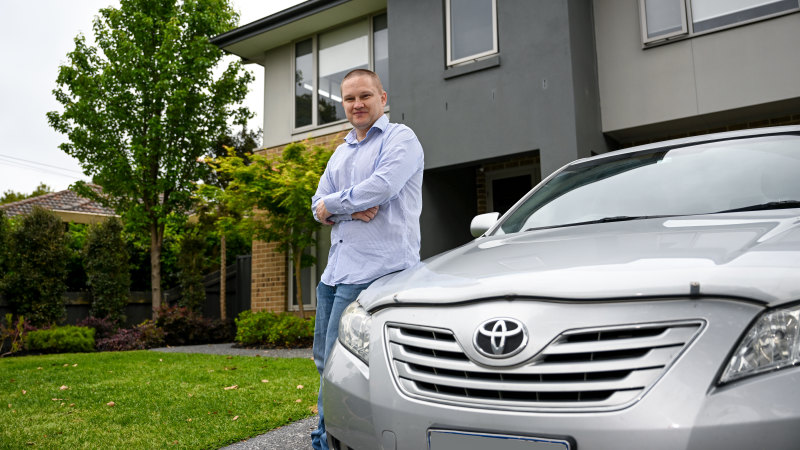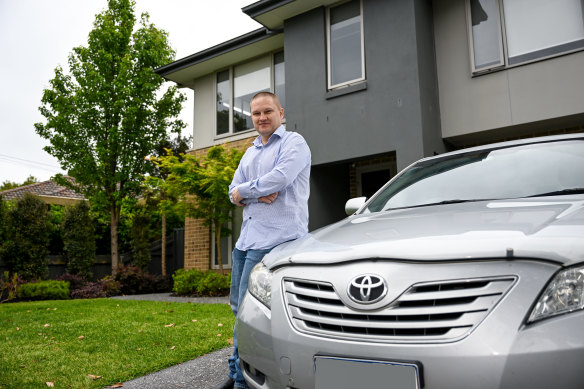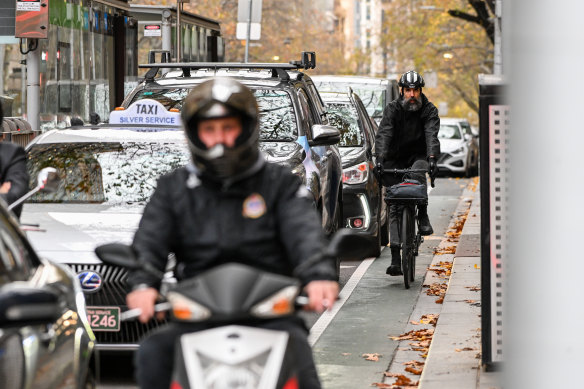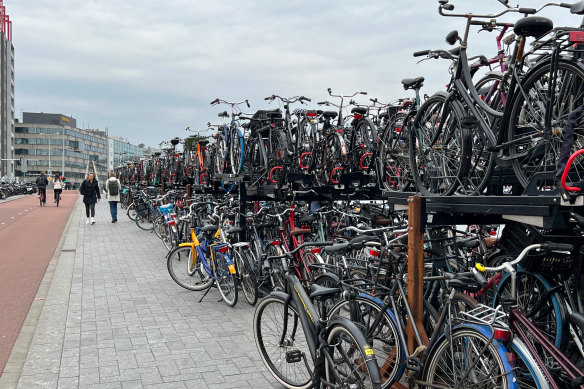Save articles for later
Add articles to your saved list and come back to them any time.
Key points
- In Australia, 52 per cent of households have two or more cars.
- Australians buy more than 1.1 million new cars each year for a population of 26 million.
- Australia has some of the highest rates of car ownership per capita in the world, 38 per cent higher than the United Kingdom and 20 per cent higher than Germany.
For many Australians, one car is not enough – 52 per cent of households own two or more vehicles – but the hidden cost of our car obsession is significant.
Cars are also outpacing population growth: Car registrations have increased by 51 per cent since 2001, while the population grew by just 37 per cent. In 2022 alone, Australians bought more than 1.1 million new cars. It’s one of the highest rates of car ownership per capita in the world – 38 per cent higher than the UK and 20 per cent higher than Germany.
Shane Tresider went without his second car for a month and used an e-bike and public transport instead. Credit: Joe Armao
And while rates of car ownership have steadily increased since 2000 – there were just under 10 million private cars in Australia then, compared with 15 million in 2021 – the distance travelled by each car on average fell by 25 per cent between 2002 and 2021, as Australians buy more cars and drive them less every year.
The cost of the rise in two-car households is significant for both individuals and the broader society.
The estimated cost of a private car for an individual each month is $1350, which includes petrol, insurance and depreciation.
There is also a broader cost to the community: a recent City of Melbourne study found that in new apartment buildings, between 26 per cent and 41 per cent of parking spaces are empty.
Residents are paying for parking spaces that are not required, adding to their cost-of-living expenses and preventing that land from being used for an alternative purpose.
The Victorian Transport Policy Institute found that one parking space per unit typically increased moderate-priced housing costs by around 12 per cent, and two parking spaces increased lower-priced housing by 25 per cent.
All these extra cars also increase congestion on roads and impact the environment through pollution and emissions.
A study by ride-share giant Uber and consultants The Behavioural Architects, published on Sunday, found most people were unaware of the true cost of their car and typically underestimated it, particularly for hidden costs, such as depreciation.
“Even if they are not used often – cars in Australia sit idle 95 per cent of the time – they are not seen by their owners as financially irrational,” the study said.
A group of 58 participants around Australia were given $1350 each – which they would normally spend on their car each month – to give up one of their cars and instead use alternative transport in that same period, including public transport, e-bikes and ride-share.
During that month, participants used on average four transport modes per week.
Walking, cycling and ride-share were the most popular alternatives to private car trips and many participants said they would continue to use alternative transport.
A cyclist riding on the top end of Collins Street.Credit: Joe Armao
Shane Tresider lives in Mount Waverley with his wife and three children, and owns two cars. But during the trial, he used an e-bike, public transport and car-sharing instead of the second car, which he said was “a real eye-opener”.
“It just made you think the car is not the first choice to look at,” Tresider said.
Following the trial, Tresider said he would consider getting rid of the second car in the future but the cost of the family’s 2007 Camry was low.
Only three participants of the trial said they would sell one of their cars in the near future.
Thousands of bikes parked next to Amsterdam’s central station. Credit: Getty
The study found the barriers to reducing car ownership in Australia were inequitable access to transport alternatives, inconsistent quality, convenience and reliability of alternative transport, and the perceived high value and affordability of private cars.
In the Netherlands, where a quarter of all households do not have a car, easy access to different modes of transport enabled residents to reduce their reliance on cars, according to Roland Kager, mobility consultant and data analyst for Studio Bereikbaar in Rotterdam.
“If you’re on a train, on average, half of the people have arrived by bike and some 15 per cent used a bike at their destination,” he said.
“I think this is a key component, hidden component maybe, of the success of the trains in the Netherlands, but actually also the train is a hidden component of the success of the bike.”
The author travelled to the Netherlands with Uber.
Start the day with a summary of the day’s most important and interesting stories, analysis and insights. Sign up for our Morning Edition newsletter.
Most Viewed in National
From our partners
Source: Read Full Article



